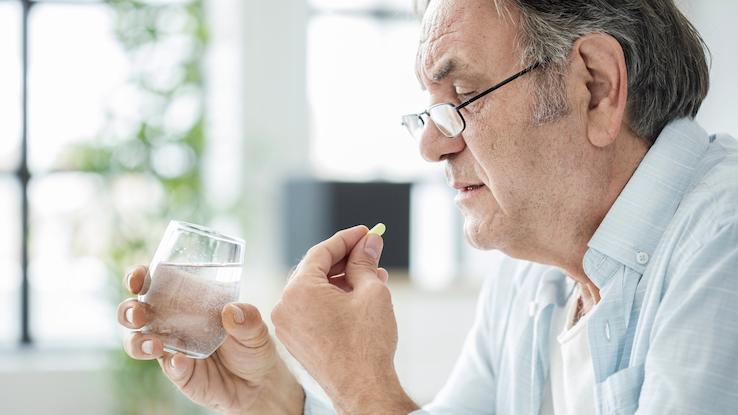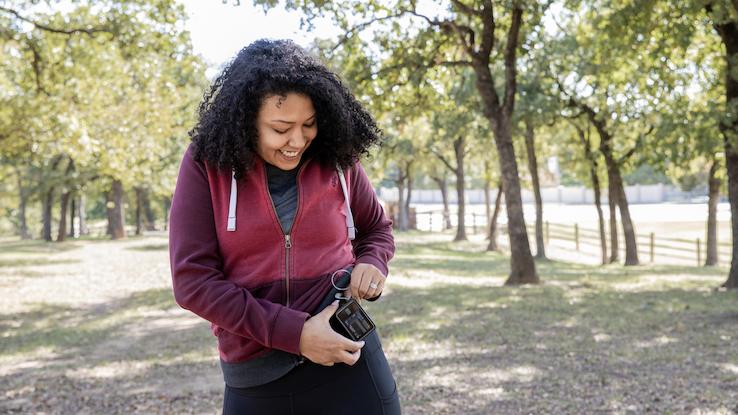
When you eat a meal, your body takes the carbohydrates you eat and breaks them down into glucose (sugar). Once all this sugar is in your bloodstream, your body releases a hormone called insulin to help sugar move from your blood into your cells, which use it for energy.
If you have diabetes, your body doesn’t produce enough insulin to move sugar from your blood into your cells — and high blood sugar can be very harmful to your health. That’s why many people with diabetes take insulin injections to help control their blood sugar.
Insulin Injections Can Treat Type 1 and Type 2 Diabetes

People with type 1 diabetes make little or no insulin. This type is sometimes called insulin-dependent diabetes. If you have type 1 diabetes, you’ll have to take daily insulin injections to replace the missing insulin in your body.
People with type 2 diabetes make some insulin, but not enough. And their cells don’t respond as effectively to insulin. If you have type 2 diabetes, you may be able to manage your blood sugar with lifestyle changes like healthy eating and physical activity.
But most people with type 2 need medicines to manage their blood sugar. Your doctor may prescribe pills to help your body make or use insulin more effectively. If pills and lifestyle changes aren’t enough to control your diabetes, you may also need to take insulin injections.
Different Types of Insulin Work for Different Amounts of Time

There are five types of insulin used to treat diabetes:
- Rapid-acting insulin starts to work about 15 minutes after injection, peaks one or two hours after injection and lasts for two to four hours.
- Regular or short-acting insulin starts to work within 30 minutes after injection, peaks at two to three hours and lasts for three to six hours.
- Intermediate-acting insulin starts to work about two to four hours after injection, peaks four to 12 hours later and lasts for about 12 to 18 hours.
- Long-acting insulin starts to work about six to 10 hours after injection and lasts for 20 to 24 hours.
- Ultra long-acting insulin starts to work six hours after injection and lasts about 36 hours or longer.
Why Do You Have to Inject Insulin? Can You Take a Pill?

Unfortunately, there are no insulin pills. That’s because the insulin hormone is a protein that would get broken down during digestion and lose its effectiveness. The only way to take insulin is to inject it.
There are pills for people with type 2 diabetes — but these aren’t insulin pills. Your doctor may recommend pills that help your body make more insulin or use your natural insulin more effectively. But there’s no pill that can provide insulin directly.
How to Inject Insulin: Syringes, Pens and Pumps

The most common way to inject insulin is with a syringe (needle). If you’re new to insulin injections, your doctor or a diabetes educator will show you how to do the injections safely. You’ll learn to draw the liquid insulin into the syringe and inject it into the fatty layer under your skin, usually on your abdomen.
Some people use an insulin pen or pump instead of a syringe. Unlike a syringe that you fill yourself, insulin pens hold a pre-filled cartridge of insulin. If you use two different types of insulin and you’re using a pen, that means you’ll have to do two separate pen injections rather than filling a syringe with both types.
Insulin pumps can continuously supply insulin to your body 24 hours a day. A pump delivers insulin through a thin, flexible tube under your skin. Pumps can be convenient and some people prefer them to injections, but you’ll still need to check your blood sugar regularly to make sure your pump is working correctly.
If you’re not sure which method is right for you, talk with your doctor or diabetes educator. Together, you can make a plan for safe, effective insulin injections.
When to Inject Insulin

If you take insulin injections, you’ll need to follow a schedule to make sure you’re getting the right amounts of insulin at the right times. This schedule is usually arranged around mealtimes, so that you have enough insulin to process the carbs you eat with each meal.
If you have type 1 diabetes, you’ll probably start out with two insulin injections per day using two different types of insulin. You may gradually increase to three or four daily injections, depending on how much your body needs to control your blood sugar.
If you have type 2 diabetes, you may start with one insulin injection a day, either instead of or in addition to your diabetes pills. You may need to increase to two, three or four daily insulin injections in order to effectively manage your blood sugar.
New Treatments May Replace Insulin Injections

In the future, stem cell therapy for diabetes may replace the need for insulin injections. Researchers are working on a way to help people with diabetes make insulin naturally again, and set them free from syringes, pens and pumps.
But for now, it’s important to stick to your diabetes treatment plan, whether that means lifestyle changes, diabetes pills or insulin injections — or a combination of all three. Diabetes can be a challenge. But if you work together with your doctors, you can find a way to manage your condition and live a long, healthy life with diabetes.
Resource Links:
- “Insulin Basics” via American Diabetes Association
- “Type 1 Diabetes” via Mayo Clinic
- “Type 2 Diabetes” via Mayo Clinic
- “Giving an Insulin Injection” via MedlinePlus





